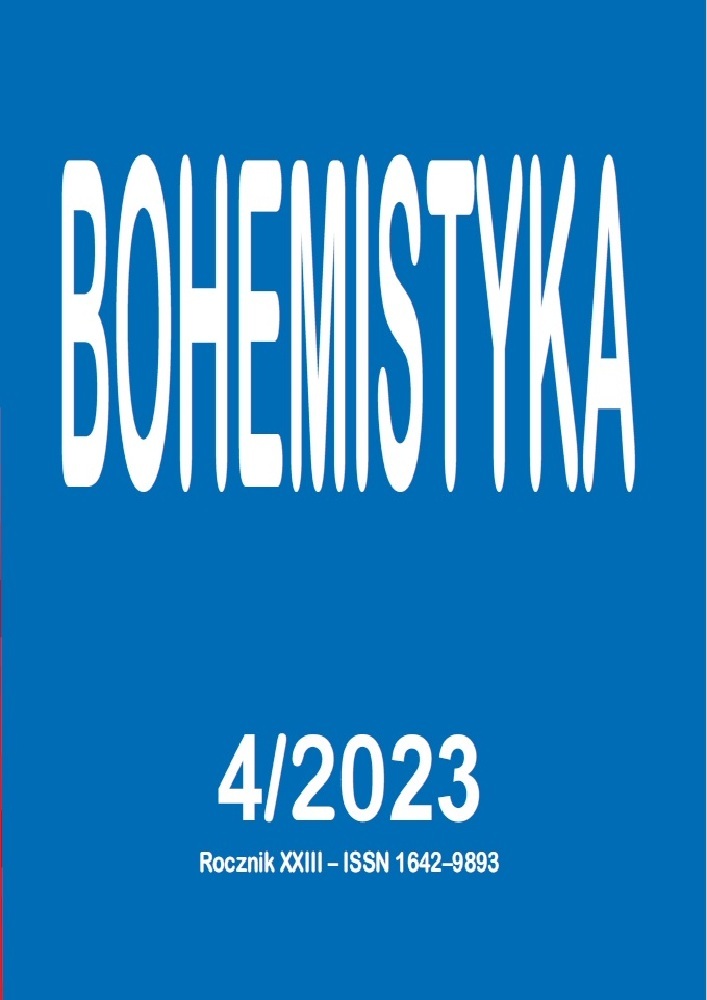Abstrakt
The paper considers the role of word-forming components from classical languages – especially prefixes and prefixoids – in the system of national languages. What effect does advancing globalization and internationalization have on the vocabulary? In addition to a linguistic view of the issue, the paper aims to map the didactic approaches dealing with components from classical languages. Globally, their knowledge is considered one of the useful tools to improve literacy and second language acquisition. With advancing globalization and the need to communicate at international level not only in scientific terminology, the question remains how Latin and Greek morphemes are or should be integrated into language teaching at different levels of the education system and how to enhance pupils’ use of knowledge in vocabulary development and comprehension of academic and other texts in mother tongue and foreign language.
Bibliografia
Karlíková H., Grécismy v českém lexiku. In P. Karlík, M. Nekula, J. Pleskalová (eds.), Nový encyklopedický slovník češtiny. Online: https://www.czechency.org/slovnik/GRÉCISMY_V_ČESKÉM_LEXIKU [cit. 27. 2. 2022].
Karlíková H., Latinismy v českém lexiku. In P. Karlík, M. Nekula, J. Pleskalová (eds.), Nový encyklopedický slovník češtiny. Online: https://www.czechency.org/slovnik/LATINISMY_V_ČESKÉM_LEXIKU [cit. 27. 2. 2022].
Martincová O., Afixoid. In P. Karlík, M. Nekula, J. Pleskalová (eds.), Nový encyklopedický slovník češtiny. Online: https://www.czechency.org/slovnik/AFIXOID [cit. 27. 2. 2022].
Booij G. E., 2005, Compounding and derivation: Evidence for Construction Morphology. In W. U. Dressler, F. Rainer, D. Kastovsky, O. Pfeiffer (eds.), Morphology and its Demarcations, Amsterdam/Philadeplhia: John Benjamins, s. 109–132. DOI: https://doi.org/10.1075/cilt.264.08boo
Bowers P., Kirby J., Deacon H., 2010, The Effects of Morphological In- struction on Literacy Skills: A Systematic Review of the Literature. „Review of Educational Research” 80, č. 2, s. 144–179. DOI: https://doi.org/10.3102/0034654309359353
Bowers P., Kirby J., 2017, Morphological instruction and literacy. Binding phonological, orthographic, and semantic features of words. In K. Cain, D. L.Compton, R. K. Parrila (eds.), Theories of Reading Development. Amsterdam/Philadeplhia: John Benjamins Publishing Company. DOI: https://doi.org/10.1075/swll.15.24kir
Bozděchová I., 2010, Internacionalizační tendence a typ češtiny. In Novyye yavleniya v slavyanskom slovoobrazovanii. Sistema i funktsionirovaniye. Moskva: Izdavatel’stvo Moskovskogo universiteta, s. 257–269.
Breen L. C., 1960, Vocabulary development by teaching prefixes, suffixes and root derivatives. „The Reading Teacher” 14, č. 2, s. 93–97.
Durkin P., 2014, Borrowed Words: A History of Loanwords in English. Oxford: Oxford University Press. DOI: https://doi.org/10.1093/acprof:oso/9780199574995.001.0001
Ebbers S. M., 2004, Vocabulary through morphemes: Suffixes, prefixes, and roots for intermediate grades. Longmont, CO: Sopris West.
Eco U., 1977, Jak napsat diplomovou práci. Praha: Votobia.
Graves M., Ruda M., Sales G. S., Baumann J. F., 2012, Teaching Prefixes: Making strong instruction even stronger. In E. J. Kame’enui, J. F. Baumann (eds.), Vocabulary instruction. Research to Practice. New York: The Guilford Press.
Janovec L., 2007, K projevům jazykových vývojových tendencí v současné češtině. „Naše řeč” 90, č. 2, s. 57–66.
Martincová O., Savický N., 1987, Hybridní slova a některé obecné otázky neologie. „Slovo a slovesnost” 48, č. 2, 124–139.
Mitter P., 2003, Složená hybridní substantiva s prvním komponentem cizího původu v současné češtině. In Acta Universitatis Purkynianae, č. 95. Ústí nad Labem: Univerzita J.E. Purkyně
Mitter P., 2004, Vymezení některých prefixoidů a radixoidů v české lingvistické literatuře. „Jazykovědné aktuality” 41, č. 3–4, s. 31–36.
Mravinacová J., 2005, Neosémantismy vzniklé pod vlivem cizího jazyka. In O. Martincová et al. (eds.), Neologizmy v dnešní češtině. Praha: ÚJČ AV ČR.
Rasinski T. V., Padak N., Newton J., Newton E., 2011, The Latin-Greek Connection: Building Vocabulary Through Morphological Study. „The Reading Teacher” 65, č. 2, s.133–141. DOI: https://doi.org/10.1002/TRTR.01015
Rasinski T.,V., Padak N., Newton R., Newton E., 2008, Greek and Latin Roots: Keys to Building Vocabulary. Huntington Beach: Shell Educational Publishing, California.
Svobodová D., 2007, Internacionlaizice současné české slovní zásoby. Ostrava: Ostravská univerzita, Pedagogická fakulta.
White Th. G. et al., 1989, Teaching Elementary Students to Use Word-Part Clues. „The Reading Teacher” 42, č. 4, s. 302–308.
Yurtbaşi M., 2015, Building English Vocabulary Through Roots, Prefixes and Suffixes. „Global Journal of Foreign Language Teaching” 5, č. 1, s. 44–51. DOI: https://doi.org/10.18844/gjflt.v5i0.39
Žaža S., 2010, Latina a řečtina v slovní zásobě, gramatice a terminologii slovan- ských jazyků. Brno: Masarykova univerzita.
Licencja
Prawa autorskie (c) 2023 Eliška Králová

Utwór dostępny jest na licencji Creative Commons Uznanie autorstwa – Użycie niekomercyjne – Bez utworów zależnych 4.0 Międzynarodowe.





